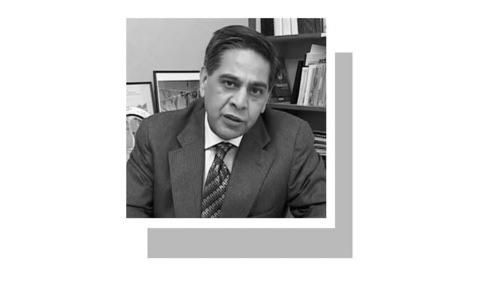
ISLAMABAD: The number of human trafficking victims around the world is on the rise while armed groups and terrorists are trafficking women and children to generate funds and recruit, according to the latest Global Report on ‘Trafficking in Persons’.
The 2018 report, released by the UN Office on Drugs and Crime (UNODC) on Monday, reveals that more victims of human trafficking were reported to the United Nation’s agency in 2016 than at any time over the past 13 years.
It says that increased numbers of victims detected may indicate that more trafficking is taking place or that countries are making use of more efficient tools and procedures to identify trafficking victims.
Children account for 30pc detected victims while girls outnumber boys
According to the report, while severity is difficult to measure, an assessment of the evolution of national anti-trafficking responses can shed light on the drivers of these rising numbers.
The exact measures vary between countries, but generally, they include creation or revision of relevant legislation, adoption of national action plans on human trafficking, strengthening of investigative and/or prosecutorial coordination and capacity, classification of trafficking as a grave criminal offence or measures to identify, protect and support victims of trafficking.
For many of the countries that recorded increasing trends, some of the institutional responses can be related to the increase. In particular, most of the increases coincided with or followed shortly after one or more of these anti-trafficking measures were introduced.
An increase in the number of victim detection can also reflect an actual increase in the severity of trafficking in persons, particularly in countries where anti-trafficking institutions and legal framework have been in place for a long time. What emerges from the analysis, however, is that when countries did not enhance their anti-trafficking actions, the number of detected victims tended to decline.
A trend analysis on the number of trafficking convictions shows that globally, these have clearly increased over the last seven years. In some countries, however, even though the trend is increasing, the number of convictions remains very low. There appears to be hardly any risk for traffickers to face justice.
The report says that globally, countries are detecting and reporting more victims and convicting more traffickers. The report also finds a clear increase in the number of children being trafficked, who now account for 30 per cent of all detected victims, with far more girls detected than boys. Sexual exploitation continues to be main purpose for trafficking, accounting for some 59pc.
Adult women comprised nearly half of the detected victims in 2016. Men and girls were detected in similar proportions; each profile accounted for about one fifth of the detected victims. The analysis of the data on trafficking victims shows that over the last 15 years, women and girls together continued to represent more than 70pc of detected trafficking victims.
In South Asia, East Asia and the Pacific, men accounted for more than 30pc of detected victims in the same year; a significantly large share in the global total. In South Asia as well as in Central Asia, trafficking for forced labour and sexual exploitation were detected in near-equal proportions.
As for other forms of exploitation, trafficking for removal of organs remains very limited in terms of the numbers of detected victims. About 100 victims of trafficking for organ removal were detected and reported to the UNODC between 2014 and 2017.
The limited information available for Bangladesh, Maldives, Nepal and Pakistan reveals that female victims accounted for 59pc of the total detected victims. Detection of boys is limited. Overall, almost equal proportions of men, women and children are detected. Among the detected trafficking victims in 2016, 37pc are men. Nepal reports more child victims than adults.
In Pakistan, the parliament has approved two new laws, “The Prevention of Trafficking in Persons Act 2018” and “The Prevention of Smuggling of Migrants Act 2018”. The laws safeguard the rights of victims of human trafficking and address the needs of smuggled migrants, the report notes.
Published in Dawn, January 9th, 2019












































